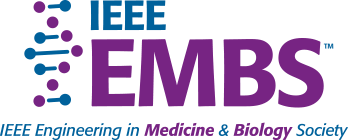Performance Evaluation of Magnetic Resonance Coupling Method for Intra-Body Network (IBNet) IEEE EMBS //www.embs.org/wp-content/uploads/2023/02/ieee-embs-tag-tm-logo2x.png
The study presents magnetic resonance (MR) coupling as a promising method for the intra-body network (IBNet) by demonstrating effective signal transmission in the human body. A comparative performance evaluation revealed that the MR coupling exhibited a path loss (PL) of under 33 dB (at 13.56 MHz), which is lower than other methods (galvanic, capacitive, or RF). The angular orientation between the transmitter and receiver showed a minor variation (∆PL ≤ 0.62 dB) but moderate dependency on distance (0.05 dB/cm). Different postures did not affect the communication (∆PL ≤ 0.21 dB). Multi-nodal transmission using MR coupling also showed successful communication. read more





